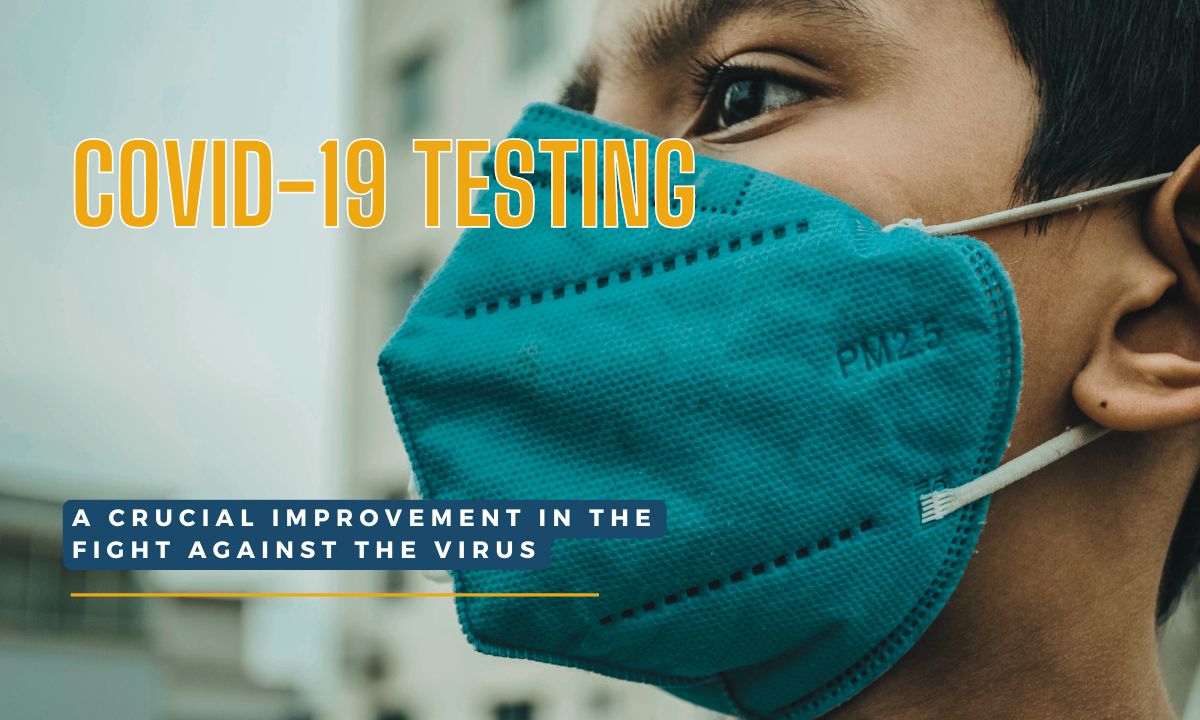
09 Apr COVID-19 Testing: A Crucial Improvement in the Fight Against the Virus
The COVID-19 pandemic has brought the world to a standstill, but one key strategy to slow the spread has been widespread testing. Testing is crucial because it helps identify individuals who are infected with the virus and may unknowingly spread it to others. The more efficient the testing process, the quicker we can isolate positive cases, limit transmission, and eventually bring the virus under control.
Until recently, the standard COVID-19 test required up to two days to deliver results, a timeframe that left a significant gap for potential virus transmission. In this article, we’ll explore the evolution of COVID-19 testing, the impact of faster testing methods, and why widespread access to rapid testing is essential in controlling the pandemic.
Table of contents
- The Importance of Timely COVID-19 Testing
- Challenges with Early COVID-19 Testing
- The Impact of Faster Testing on Virus Containment
- Abbot Labs’ 5-Minute Test: A Turning Point
- The Need for Widespread Distribution of Rapid Tests
- Practical Tips for Staying Safe During the Pandemic
- Looking Toward the Future
- Conclusion
- FAQs
The Importance of Timely COVID-19 Testing
Effective testing is the cornerstone of managing any infectious disease, and COVID-19 is no exception. With timely testing, health authorities can identify infected individuals, trace their contacts, and enforce isolation measures to prevent further spread. In the early days of the pandemic, the World Health Organization (WHO) estimated that each infected person was likely to transmit the virus to 2.5 others. However, more recent studies have shown that this number is closer to 5.7, significantly higher than initially thought.
With such a high transmission rate, it’s clear that faster testing could reduce the spread of the virus. The sooner someone knows they are infected, the quicker they can take precautions to avoid passing the virus to others.
Challenges with Early COVID-19 Testing
In the early stages of the pandemic, one of the biggest hurdles was the time it took to receive test results. For many months, it could take up to two days or even longer to process a COVID-19 test. During that waiting period, individuals who were positive could inadvertently expose others, particularly those they came into close contact with. This delay created an unfortunate window where the virus could spread, even as people awaited confirmation of their infection status.
Moreover, delays in testing weren’t just a problem for individuals—they also hindered the broader public health response. Contact tracers were often working with outdated information, and the overall effectiveness of isolation measures was diminished by the slow turnaround of test results.
The Impact of Faster Testing on Virus Containment
Thankfully, advancements in COVID-19 testing have significantly improved the speed at which we can get results. In particular, Abbot Laboratories developed a rapid COVID-19 test that can deliver results in as little as 5 to 13 minutes. This kind of rapid testing represents a game-changing innovation, dramatically shortening the time between testing and diagnosis.
Why is this important? A quicker diagnosis means that infected individuals can be isolated faster, limiting their ability to spread the virus. With the virus having a high transmission rate, every hour counts. Reducing the delay between testing and results means fewer people will be exposed to an infectious individual, and ultimately, the spread of the virus will slow down.
Abbot Labs’ 5-Minute Test: A Turning Point
Abbot Labs’ rapid test is an example of how innovation can meet the urgent needs of a global crisis. This test uses molecular technology to detect the virus, providing results in 5 to 13 minutes. It’s compact, portable, and can be used in various settings, including doctor’s offices, urgent care clinics, and even pharmacies.
The potential impact of such widespread testing is enormous. If widely distributed, it could transform how we manage the pandemic. People could be tested as soon as symptoms appear, and results would be available in mere minutes, allowing for immediate isolation of positive cases. This would not only reduce the virus’s spread but also ease the burden on healthcare systems.
The Need for Widespread Distribution of Rapid Tests
While the development of faster testing methods is an important step, it’s equally important to ensure that these tests are made widely available. As of now, rapid testing machines like the one developed by Abbot Labs are still being distributed and scaled up for broader use. However, as more governments and health organizations procure these rapid testing technologies, we can expect a much more efficient system for identifying and isolating positive cases.
Widespread access to rapid testing could also help manage asymptomatic carriers—those who have the virus but show no symptoms and may not realize they are contagious. Identifying these individuals is crucial for breaking chains of transmission and protecting vulnerable populations.
Practical Tips for Staying Safe During the Pandemic
Even with improved testing options, it’s critical to follow public health guidelines to stay safe and reduce the virus’s spread. Here are some essential precautions:
- Monitor Your Health: Take your temperature at least twice a day, especially if you feel unwell or have been exposed to someone with COVID-19.
- Wash Your Hands Frequently: Use soap and water for at least 20 seconds, especially after touching surfaces or being in public spaces.
- Wear a Mask: Masks help prevent the spread of respiratory droplets, which is a primary way COVID-19 is transmitted.
- Avoid Close Contact: Maintain physical distance from others, especially in crowded places like elevators or public transportation.
- Get Tested When Needed: If you experience symptoms or have been in contact with someone who tested positive, seek out a testing facility, especially if rapid testing is available.
Looking Toward the Future
The development of faster testing methods like Abbot Labs’ 5-minute test is a promising step toward better managing the COVID-19 pandemic. As we work to increase the availability and accessibility of these rapid tests, there’s hope that we can more effectively contain the virus and eventually return to normal life.
As the pandemic subsides, remember to stay vigilant. Testing will remain a crucial tool even as the virus’s spread slows. In the meantime, take steps to protect yourself and your loved ones by following health guidelines and staying informed about new developments in COVID-19 testing and treatment.
Conclusion
The future of COVID-19 testing is bright, and rapid testing technologies will play a vital role in controlling the pandemic. With the development of tests that can deliver results in minutes, we’re one step closer to limiting the virus’s spread and getting ahead of this global health crisis. However, for these innovations to truly make an impact, they need to be widely distributed and easily accessible to everyone. Until then, following safety precautions and monitoring your health remains essential in the fight against COVID-19.
FAQs
1. How does rapid COVID-19 testing work?
Rapid testing, like the Abbot Labs test, uses molecular technology to detect the virus’s genetic material, delivering results within minutes.
2. Why is fast COVID-19 testing important?
Fast testing allows for quicker isolation of infected individuals, reducing the time they can unknowingly spread the virus to others.
3. How accurate are rapid COVID-19 tests?
While generally reliable, rapid tests can sometimes have lower sensitivity compared to standard tests, meaning false negatives are possible.
4. Where can I get a rapid COVID-19 test?
Many urgent care centers, pharmacies, and doctor’s offices offer rapid tests. Check local health department websites for specific locations.
5. What should I do if I test positive for COVID-19?
If you test positive, follow public health guidelines: isolate yourself from others, monitor your symptoms, and seek medical care if needed.



